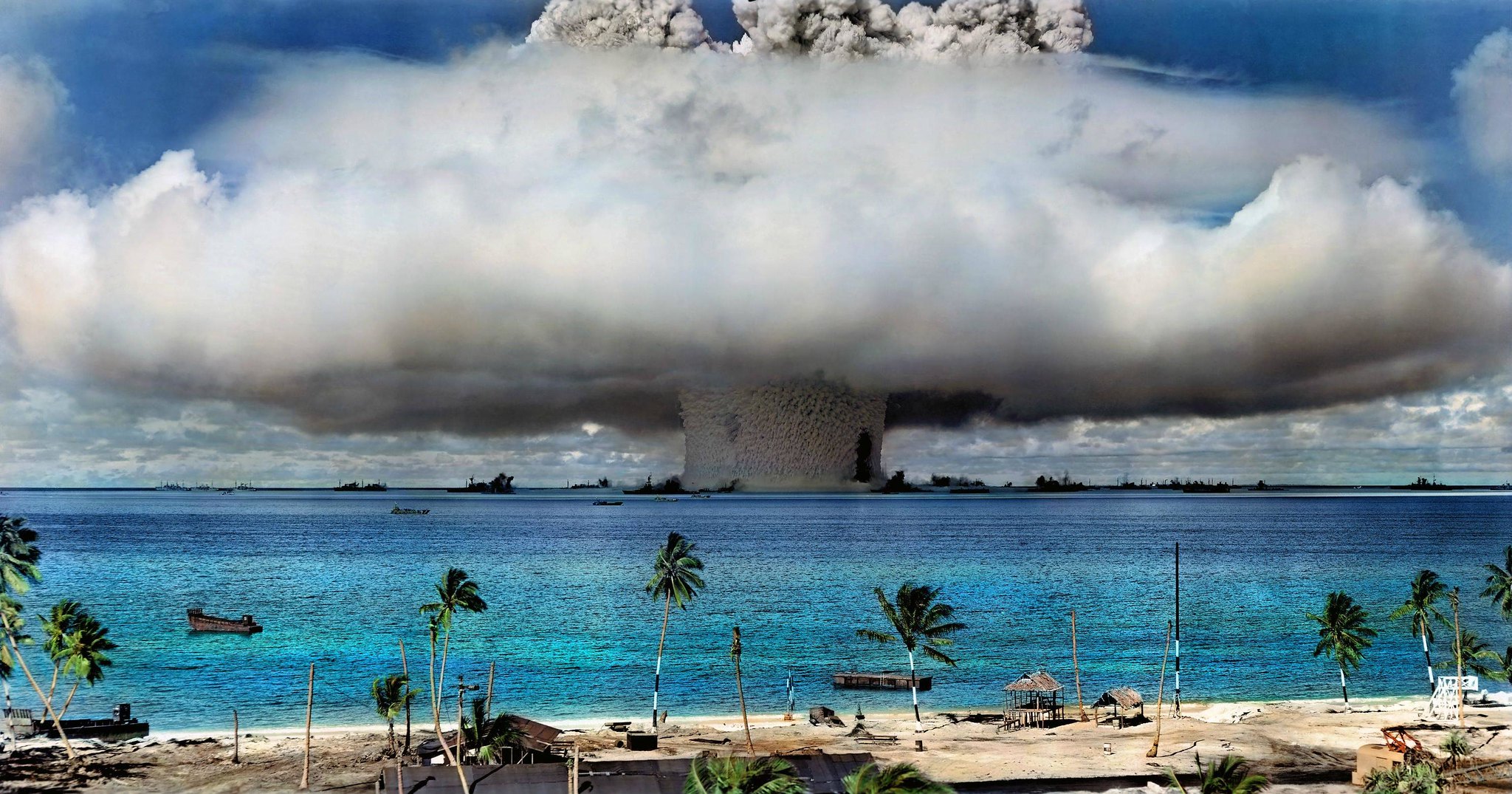Excerpt:
The Pacific island nation is seeking $35 billion to protect against sea-level rise and prevent a mass exodus.
The Marshall Islands extend across a wide stretch of the Pacific Ocean, with dozens of coral atolls sitting just a few feet above sea level. The smallest of the islands are just a few hundred feet wide, barely large enough for a road or a row of houses. The country’s total landmass makes up an area smaller than the city of Baltimore, but it occupies an ocean territory almost the size of Mexico.
Over the past two years, government officials have fanned out across the country, visiting remote towns and villages as well as urban centers like its capital of Majuro to examine how Marshallese communities are experiencing and coping with climate change. They found that a combination of rapid sea-level rise and drought has already made life untenable for many of the country’s 42,000 residents, especially on outlying atolls where communities rely on rainwater and vanishing land for subsistence.
The survey was part of a groundbreaking, five-year effort by the Marshall Islands to craft a sweeping adaptation strategy that charts the country’s response to the threat of climate change. The plan, shared with Grist ahead of its release at COP28 in Dubai, calls for tens of billions of dollars of new spending to fortify low-lying islands and secure water supplies. Representatives from the Marshall Islands say the plan shows that their country can remain livable well into the next century — but only if developed countries are willing to help. Even with aid, the plan concedes many Marshallese will likely need to migrate away from their home islands, or even leave the country altogether for the United States, as climate impacts worsen.
“We call it our national adaptation plan, but it is really our survival plan,” said John Silk, the foreign minister of the Republic of the Marshall Islands, during a closed-doors panel conversation at the Clinton Global Initiative summit in New York in September.
Other vulnerable countries have submitted adaptation plans to the United Nations before, and some have even planned large-scale relocations to escape sea-level rise, but the Marshall Islands plan is different, and not only because of the existential nature of climate risk in the country. As they developed the plan, government officials interviewed more than 3 percent of the country’s population — some 1,362 people — during 123 days of site visits on two dozen islands and atolls. The only other national adaptation plan that has involved any community participation was that of the island nation of St. Lucia, in the Caribbean. In that case, officials interviewed only 100 people.
“We’re about to make a huge change to our islands, and we can’t do that if we just make that decision unilaterally as government representatives,” said Kathy Jetn̄il-Kijiner, a poet and activist who serves as the Marshall Islands’ climate envoy, in an exclusive interview with Grist ahead of the plan’s release. “It has to come from the community themselves too, because they’re the ones getting impacted.”
Experts who reviewed the plan described it as among the most comprehensive attempts by any country to plan for long-term climate impacts.
“This is one of the most thoughtful and meticulous long-term adaptation plans I’ve seen,” said Michael Gerrard, a law professor at Columbia University who has studied climate adaptation policy, including the Marshall Islands. “The plan doesn’t just wring hands; it sets forth a systematic decision-making process…”
See Also:
Nuclear legacy looms as Marshall Islands face climate change threat
For years, the Marshall Islands served as a nuclear testing ground for the United States. Today, residents say they’re still dealing with the consequences. But some see history repeating itself as the islands face the ongoing threat of climate change. NHK World’s Yoshida Mayu reports.
from: NHK WORLD-JAPAN (07-04-2023)

Artists sail to Marshall Islands for climate wake-up call
– Reuters (08-11-2023)
A group of artists will set sail for the remote Marshall Islands in the Pacific Ocean, hoping that their trip through one of the world’s most vulnerable regions will draw attention to the impact of climate change and rising sea levels.









